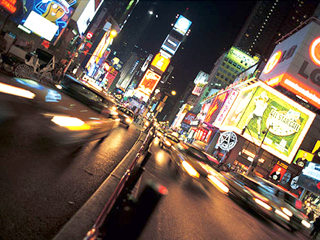 Forget The Recognition, There’s Another Reason Why Creatives Are Obsessed With Winning Awards
Forget The Recognition, There’s Another Reason Why Creatives Are Obsessed With Winning Awards
Why is it that Art Directors and Copywriters have a seemingly insatiable desire to win awards? Is it our pitiful need for praise, a pat on the back, and an acknowledgement of a job well done? Yes. Is it our desperate desire to be recognized as a somebody in a nobody industry? Yep. Is it our shallow hope that winning an award will get us laid after the post-show gala? You betcha. However, there is an equally powerful, though seldom discussed, incentive behind our hankering for One Show pencils, Cannes Lions and Black D&AD pencils.
It’s called money.
That’s right, most of us are also motivated by coin. So a big part of all that tantrum throwing when our ads don’t get approved is due to money. You see, every time one of our great ideas doesn’t sell, the opportunity cost to our future income is staggering. We’re talking about tens of thousands, even hundreds of thousands of dollars of potential income loss. How’s that? When you’re an award-winning creative you get offered a lot of money by agencies that want award-winning work. At award shows headhunters, agency CEO’s and ad groupies are all over you like green on grass. You’re wined and dined and treated like a rock star. Next thing you know, you’re jetting around the world in first class, shooting spots in exotic locations, dating Czech supermodels and making more money than you ever dreamed possible. Pretty heady stuff for a geeky English major from Nowheresville, NC.
So there. Now you know the real reason why creatives pitch a fit when our ads die untimely deaths in presentations and focus groups. Everything is riding on those ads. (Including the prospects of riding in better sports cars or having Czech supermodels riding on us.)
Of course, all this is bad news for clients trying to build a brand. It’s hard (if not impossible) to maintain a consistent look and tone with your campaign when your creative teams keep quitting to work for someone else.
Great Creative Talent Is Easy To Find But Hard To Keep
Isn’t it ironic that in an industry that gets paid for building brand loyalty there is no brand loyalty between creatives and agencies? The fact is, the average creative only works for an agency a year-and-a-half. It’s no coincidence that’s about how long it takes for a good creative to add some new award-winning stuff to his book, get a better offer and jump ship. By hopping from agency to agency, a creative with a good reel and print book containing two or three award-winning campaigns can almost double his salary with every move. And if they win some major awards, (like Best of Show at Cannes) they can literally triple their salaries in no time.
On the other hand, if a creative hasn’t produced any award-winning work in two years at an agency, he’s going to jump ship to an agency where he has a better shot at winning something – if he can. If a creative is still at the same agency longer than two or three years, chances are:
He’s cashed in his chips and the agency is paying him more money than God.
He can’t get a job anywhere else.
He owns all or part of the agency.
His wife makes more than he does and doesn’t want to move.
To make matters worse, most agencies could care a less. There are plenty of other creatives out there with bigger, better, more award-winning portfolios than your current staff. This is just more bad news for clients who want a consistent look and feel to their brand. The new creative teams are going to fight like hell to change the campaign and make it their own.
Not to mention, it takes a lot of time for copywriters to master the tonality of an already established campaign – if in fact, they ever do. I’ll let you in on a nasty little agency secret. Agencies rarely promote their own creatives. If there’s an opening for a Creative Director, ninety-nine times out of a hundred, they’ll hire someone from outside the agency. Even if there’s a senior art director or copywriter working for the agency that’s more qualified to fill the position.
The reason behind this is pretty simple. It’s called ego. Creatives work in teams consisting of an art director and a copywriter. Teams of art directors and copywriters usually work under a team of creative directors. There is absolutely no way a Creative Director who’s an art director is going to degrade himself by promoting a senior copywriter that used to work for him to be his new partner. Ain’t gonna happen. (Unless of course, he’s worked with this writer out of necessity and they win some big awards together.) Usually the only time a senior creative gets promoted to creative director is when the current creative director:
gets fired
quits to make more money at another agency
dies
So if you’re an art director or copywriter waiting to get promoted to creative director by your shop – you’re probably wasting your time.
So how do agencies choose a new creative director?
You guessed it. They hound the award shows looking for the new creative superstar who will put the agency on the award show map. When you win an award, headhunters are all over you like green on grass. They pore over award annuals. And usually, the creative with the most Lions and Pencils goes to the highest bidder. Unless, the creative gets an offer from a really hot shop where they think they can produce more award winning work and eventually make more money when they sell out to a big, giant corporate conglomerate and are never heard from again. The problem with this model is there’s no correlation with hiring an expensive, award-winning creative and new business wins, effectiveness of agency work and agency morale. In fact, it’s been my experience just the opposite occurs. (But that’s another topic for another day.)
So what’s to be done about it?
The most direct solution (and least likely to ever happen) is to break the stranglehold award shows have as the end-all, be-all arbiters of copywriters and art director’s self-worth and actual worth. Let’s face it; your advertising peers will not acknowledge you as an advertising creative genius unless you’ve won at least one Cannes Lion, a One Show Pencil and a D&AD Pencil. On the other hand, your parents and friends outside the industry won’t consider you a creative genius until you’ve won a Clio. Now what’s crazy about all this, and excuse me for stating the obvious, none of these shows have anything to do with the right and true measure of great advertising – results. OK, what about the Effies, you ask? While the idea behind the Effies is spot on – honoring the world’s most “effective” campaigns – the results submitted are dubious at best. (Having won a few, I know.) The Effies have been and probably always will be the Account Executives’ award show.
Here’s what’s worked for us.
As Creative Director of The Republik, I personally receive about 50 job inquiries a month from some of the most talented writers and art directors in the biz. Probably because several creative blogs have ranked us as one of the top ten creative agencies out there. Most of our art directors, writers and graphic designers have been with us for much, much longer than the agency norm and I have no doubt they will be here for years to come.
Yet, The Republik is a small agency in a small market and we don’t even enter most award shows. So how do we keep our art directors and copywriters happy when we really don’t enter award shows? And how in the world is it possible to be recognized as one of the industry’s hottest creative shops when we’re not really winning any awards?
Easy. We replace the lure of advertising awards with more satisfying alternatives. Creating work that exceeds our clients’ expectations is highly valued here. In fact, The Republik’s compensation model allows us to generously bonus art directors, writers, designers (and AE’s) who create effective work. As an employee-owned agency, everyone who works here (after proving him or herself) has an opportunity to become a Republik partner. We turn our staff into advertising superstars by making sure their work is written about and featured in every on and offline medium possible. In the last five years, The Republik’s work has been featured over 5,000 times by news outlets as diverse as The New York Times, Country Music Television, Boating Magazine, Inside Edition, Creativity, Time Magazine and CA to name a handful.
The results?
Our creatives not only feel like they’re being paid well, they can actually make more by doing more effective work.
Everyone loves the instant gratification of seeing his or her work discussed in print. (Our clients like it too – but that’s another story.) There are few fights between AE’s and creatives over the work – the goal is no longer about winning awards but to create results.
Ironically, the work is creatively better. (We not only believe, but also know, there is a direct correlation between great artistic work and positive results. (For more on this, see my blog on Pull vs. Push Advertising.)
The Republik has some of the lowest creative and account turnover rates in the biz.
I could go on, but I have more rewarding work to do. Let’s face it, this blog isn’t going to win me any awards or more importantly, earn me more money. Oh, and for the record, my wife is Czech.
by David Smith The Republik
Photo Credit: Unknown – Licensed CC-BY-NC-SA



